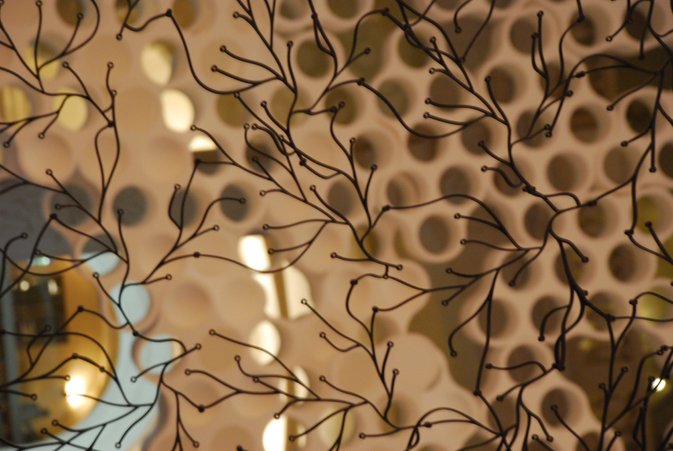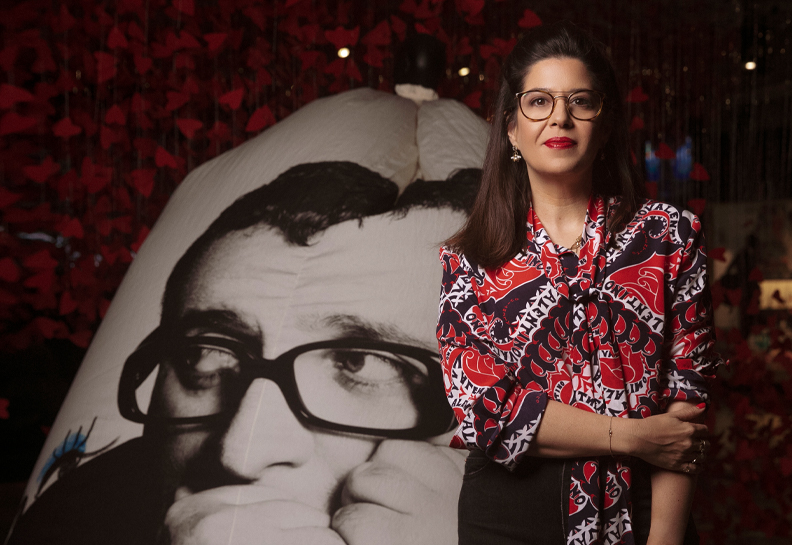The Musée des Arts Décoratifs Nave has hosted Momentané, a retrospective exhibition of the work of brothers Ronan and Erwan Bouroullec.
The Ronan and Erwan Bouroullec Exhibition at Musée des Arts Décoratifs
From April 26 to September 1, 2013, the Musée des Arts Décoratifs have hosted Momentané, a retrospective exhibition of the work of Ronan and Erwan Bouroullec. The Bouroullec brothers could be crowned the most successful French designers in the past decade, they are recipients of the A&W Award for Best Designers of the Year, and do not stop producing innovative yet functional products. They design for big furniture and textile manufacturers and brands such as Magis, Alessi, Vitra, and Kartell, and published Drawing this year, a book that traces visual thinking processes.
Momentané provided an overview of the breadth of their work over the past fifteen years, and traced the various stages in their international careers, including their current projects.
The exhibition covered about 1000 m2, and was displayed in three main sections. The first and most impressive is already revealed in all its glory from the staircase at the entrance to the museum, where the exhibition’s introductory text is positioned. The text was printed on tiles from a series designed for Mutina, and which are incorporated into the design of the entire exhibition.
Showing in the main space were various objects designed by the Bouroullecs, but it is the impressive design of the space itself that impacted visitor experience. In recent years Ronan and Erwan Bouroullec have engaged in space and installation design, or scenography, an intersecting field with set or stage design. The exhibition space was divided into sub-spaces by means of a number of modular elements developed by the two designers: in the front was a wall made from the well-known cloud-shaped modular shelf; a screen constructed from a lightweight, red modular element divided the room and served as an attraction for inquisitive visitors.
In another area, textile walls the Bouroullecs designed for the Danish company Kvadrat: one made from a blend of pieces of different colored felt (Tiles), and another called Clouds.
The exhibition curators noted that this design provided a platform for the Bouroullecs’ innovative research into the partitioning of space. Their engagement in different aspects of modularity was mentioned in connection with architect and designer Charlotte Perriand (1903-1999), who is their inspiration and was known for her belief that designing good functional living spaces helps to create a better society.
A central and striking element in the exhibition was Textile Field, which they designed in 2011 for the London Design Festival. It is a colorful environment made from foam and textile modules that create a surface with gentle inclines, a sensual field that invited visitors to sit and lounge, or even meditate. Their intention was to propose a casual approach to freely experiencing what can be an intimidating environment, such as a museum. Visitors could have related to and were assimilated into this installation; some lingered just for a moment, others for longer. Children particularly enjoyed rolling over the surface as if it were a grassy hill. I enjoyed sitting and looking around me at the wealth of shape and color, and the innovative, minimalist design.
The modularity element recured in the exhibition’s second space, which was designed like a library carrel. This space housed various tables and partitions for the workspace designed by Ronan and Erwan Bouroullec. The desks were made from various materials – from plastic to cork. The space was sophisticated in its design, yet it was also simple and pleasing to the eye.
It took a few seconds for me to register that the entire gallery was essentially a Bouroullec design. Displayed on the walls were the collection of pictures that were presented last year (2012) in the Album exhibition at Vitra Design Museum (and which were published in book format), and is currently showing at MUAC (University Museum of Contemporary Art) in Mexico until the end of summer 2013. Visitors sat on chairs at tables designed by the brothers, leafed through books presenting projects and work processes, and learned a lesson in design.
A great deal of thought has gone into planning the exhibition. At its basis was the designers’ wish to present various forms of documentation at the same level. Documents, preparatory drawings, sketches, models, and archive photos that have been transported from the studio to the museum walls. Sketches for industrial projects, galleries, architectural designs, or research projects (for example, chairs that were never manufactured) – were all framed in exactly the same way so that there is no hierarchy between them. Thus, the gallery walls were covered with a kind of panorama that was simultaneously uniform and diverse, and was reminiscent of a display in a natural museum or laboratory.
Ronan and Erwan Bouroullec’s sketches possess independent artistic value, representing a unique world of (at times naïve) shapes, but they also play a significant role in the design process, in the leap from the idea to the actual production of a new object.
At the end of the room, visitors were invited to sit on chairs designed by the brothers and watch six big screens providing a visual presentation of the work of the designer according to the Bouroullecs – a process comprising the idea stage, the planning and research stage, followed by creating a prototype and adapting it for the user. Or as they have chosen to call it: Studio/Designing/Making. In this way they expose visitors to their natural work environment. They present the ordinary person with a kind of treasure map which he can use to navigate between the various projects and design approaches that coexist in the studio or workshop.
The exhibition’s third space concluded the whole process and presented Ronan and Erwan Bouroullec’s most well known and successful pieces, some which were on display here at Design Museum Holon in the exhibition The State of Things in 2011. This part of the exhibition provided a glimpse into the work of contemporary designers and the complexity of the design process as an entire tapestry that included structural and technical problems that must be addressed and resolved. The exhibition was impressive and instructive, and what contributed to its success, in my view, is the fact that the spotlight was not directed at the designers, but at the sketches, objects, and the behind-the-scenes processes that have enabled them to speak and tell their story.
The museum’s address:Musée des Arts Décoratifs107, rue de Rivoli 75001 Paris
Photographs: Michal Ben-Zvi Spiegel










